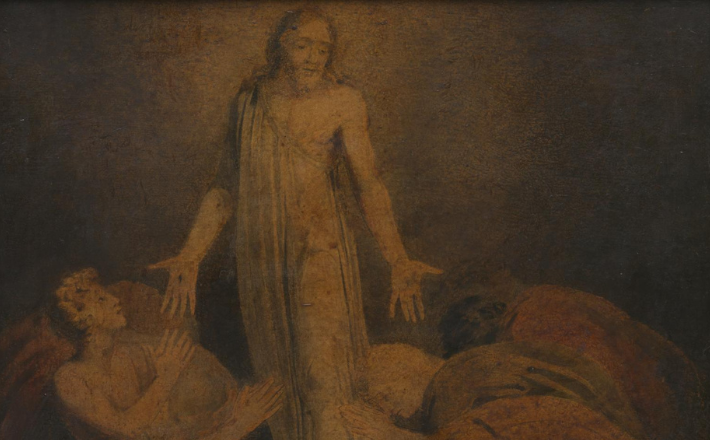Commentary on 1 John 3:1-7
First John 3 opens with an exclamation of exuberant wonder: “See what love the Father has given us, that we should be called children of God; and that is what we are” (3:1). While the author has frequently referred to his addressees as “children” (for example, 2:1, 12), this is the first time in the letter where he refers to them explicitly as “children of God.”
This identity is not a mere title but a relationship and vocation spoken into existence by God. Being children of God is a life-altering reality born out of the gift and priority of God’s love (see 4:8–10, 19). As people born of God (gennaō; 2:29, 5:1l; see also 1 Peter 1:3, 23), Christians resemble their Father by taking on his character by doing what is right/just (2:29; 3:10), being without sin (3:9), and loving our brothers and sisters (3:10).
The fact that 1 John reiterates “and this is what we are” (3:1c) and “we are God’s children now” (3:2a) suggests that members in this community are struggling to recognize their new identities amid the alienating voices and forces that say otherwise (see 2:18–22). The “world” (kosmos) fails to recognize that believers belong to God because it does not know God (see also 2:15–17).
However, Christians, who know God, can be confident that the loving relationship between them and the Father does not depend on their merit or validation from an ignorant world. The author seems to anticipate the despair felt by children who struggle to be like their Father due to their human failings and sins. Thus, he asserts, “What we shall be has not yet been revealed” (3:2b).
The adverb “not yet” (oupō) directs the reader’s gaze to the full benefits and blessings of being a child of God soon to be realized. At present, God’s beloved and begotten children have the privilege of intimacy with their Father: they see and know him—and even resemble him—even if they do so imperfectly and partially (see also 1 Corinthians 12:9-10). This is because they can look forward to a time when they will become “like him” (1 John 3:2d) and “see him as he is” in fullness (3:2e). This future consummation, or revealing (3:2c), which 1 John links with Jesus’ Parousia (2:28), brings about their complete transformation.
The eschatological hope that they will someday be like Christ should motivate believers to “purify themselves” (3:3) since their moral transformation begins “now” (3:2a). The linkage between having hope (elpis) and being pure (hagnos) is unique to 1 John 3:3. While “to purify” (hagnizō) is originally a cultic term for ritual purification in the Old Testament (for example, Exodus 19:10–11; Numbers 8:21), 1 John underscores that the cleansing from sin through the blood of Christ (1:7, 9; 2:2) makes it possible for believers to be in the presence of God.
The emphasis on 3:3 is thus on moral, not ritual, purity. “Purify” in the present active indicative conveys how Christians consecrate themselves to God again and again through their willful obedience to God’s will and intentional imitation of Christ, who is pure (see also James 4:8 and 1 Peter 1:22–23).
In 3:4, 1 John makes an abrupt and sharp contrast between Jesus’ sinlessness and human sinfulness:1 “Everyone who commits sin is guilty of lawlessness; sin is lawlessness.” The severity of this indictment is troubling because who other than Jesus can say they do not commit sin (hamartia)? And if “everyone who” (pas ho) sins is guilty of lawlessness (anomia), how can God’s children “abide in him” (2:28; 3:5)?
It is unclear whether the author here has the Old Testament law in mind or a lawless eschatological age (Matthew 24:11-12; 7:22-23; 2 Thessalonians 2:3). By associating sin with lawlessness, 1 John describes an attitude and posture of willful disobedience to God and disregard for his authority that goes beyond breaking the law or doing what is unrighteous. Lawless sinners do more than sin inadvertently—they intentionally act in ways that are antithetical to God’s will and “disdain the very idea of a law to which one must submit.”2
The fact that 1 John has already established that believers see and know God means that they acknowledge that God is holy (“in him there is no darkness at all,” 1:5), they are sinful (1:8–10), and Christ “was revealed to take away sins” (3:5).
Thus by “commits sin” and “sins” in 3:4, 6, 1 John means willful, spiteful disobedience to God by those who do not see or know God and do not wish to please God. Such sinners are not born of God but born of the devil (3:8), which is why children of God and children of the devil have no relation or resemblance to each other (3:9–10).
Make no mistake, Christians do sin. But because we live in the purifying presence of God, we can actively confess our sins to a faithful and just God with full assurance that the blood of Christ cleanses us from all sin and unrighteousness (1:7, 9). We trust that the work of Christ to take away sin and destroy the work of the devil has begun and will be completed.
We live into our beloved and begotten identity confident of the fact that God is not done with us yet. We commit ourselves again and again to doing what is right and loving one another, knowing that becoming more like the Father is a privilege of being called his sons and daughters—and that is what we are!
Notes
- Marianne Meye Thompson, 1–3 John, IVPNTC (Downers Grove, IL: IVP Academic, 2011), 92.
- Karen H. Jobes, 1, 2, and 3 John, ZECNT (Grand Rapids: Zondervan, 2014), 143.



April 14, 2024